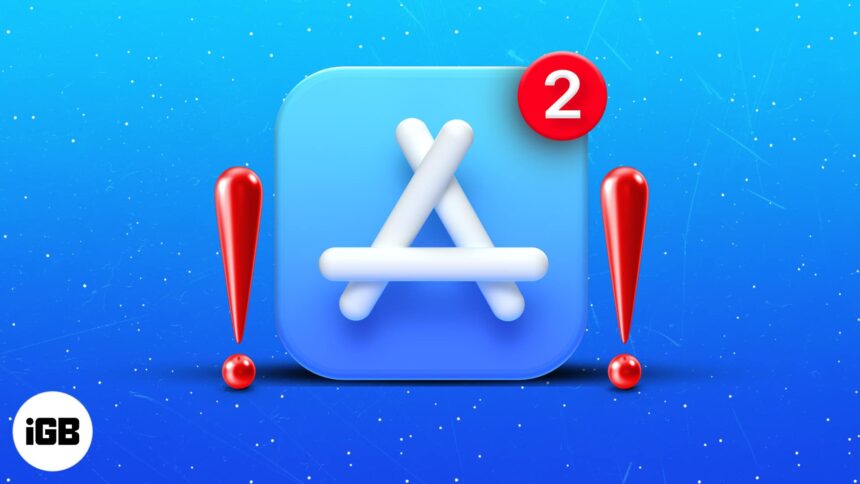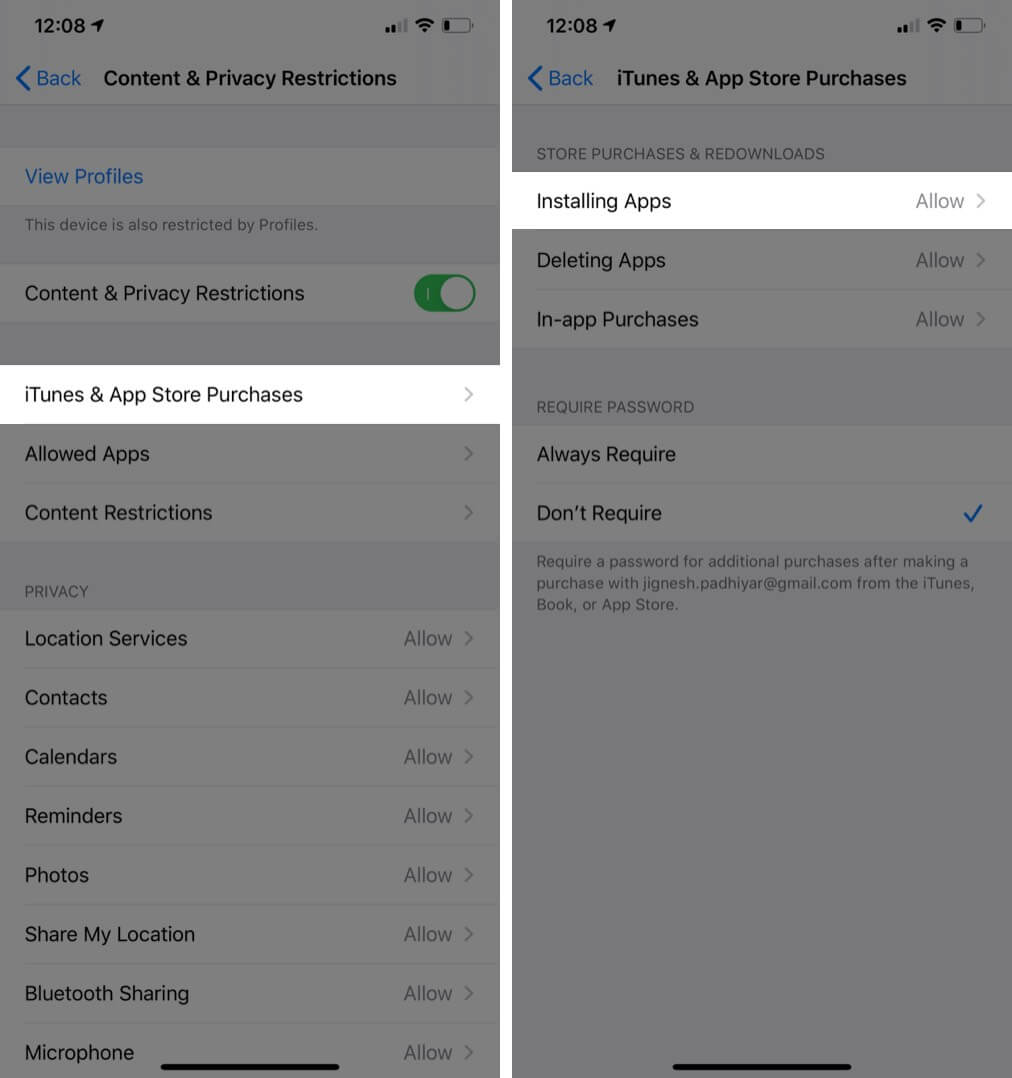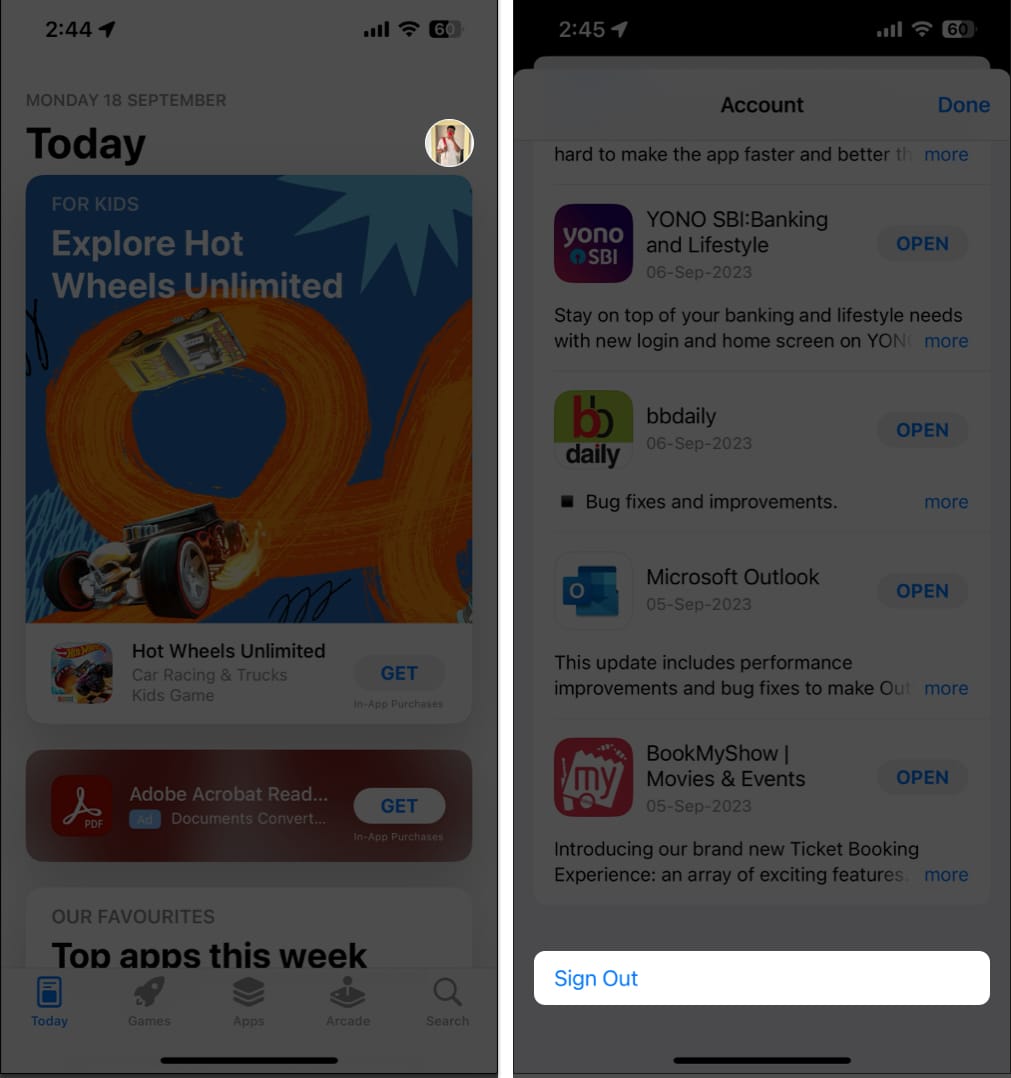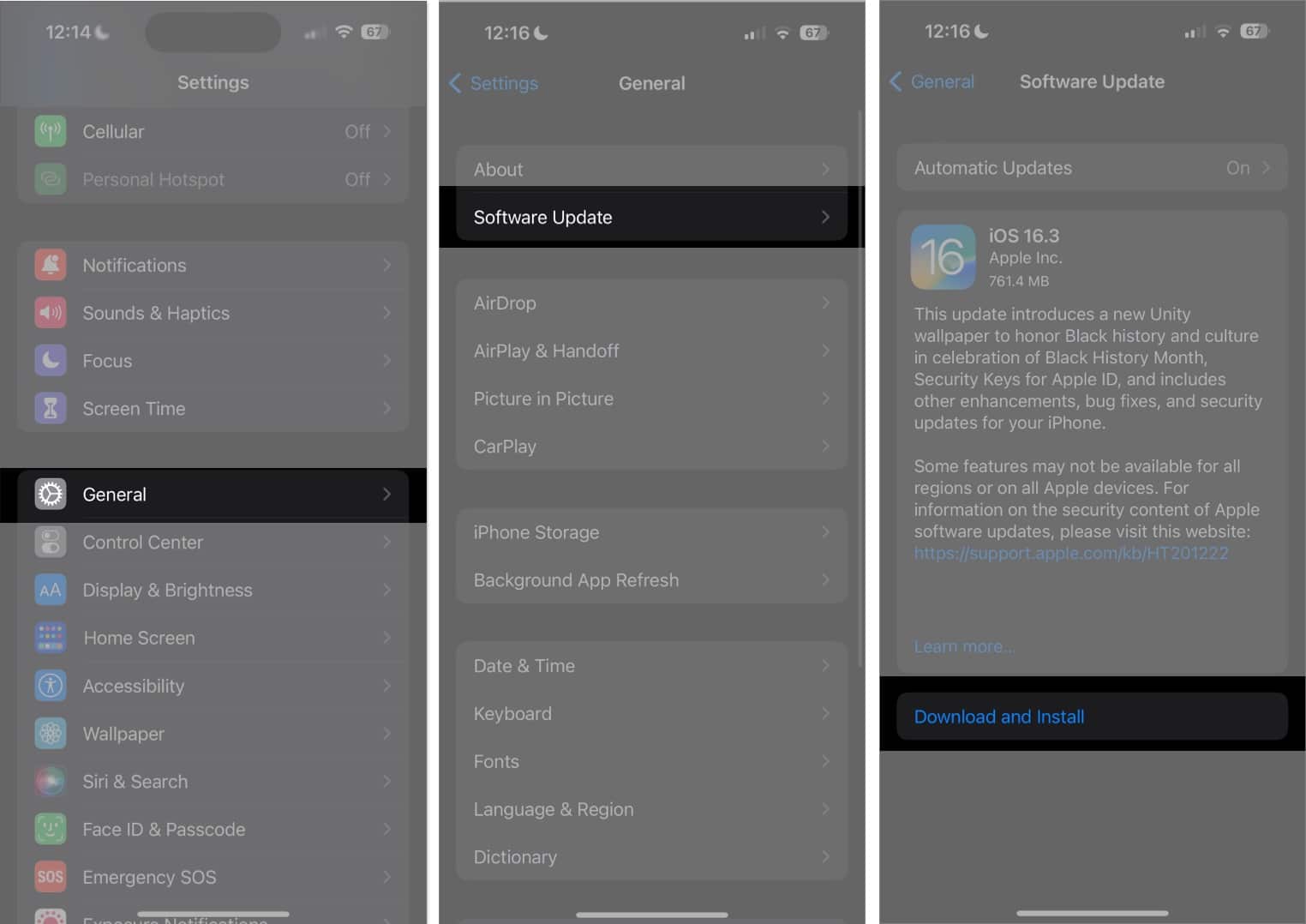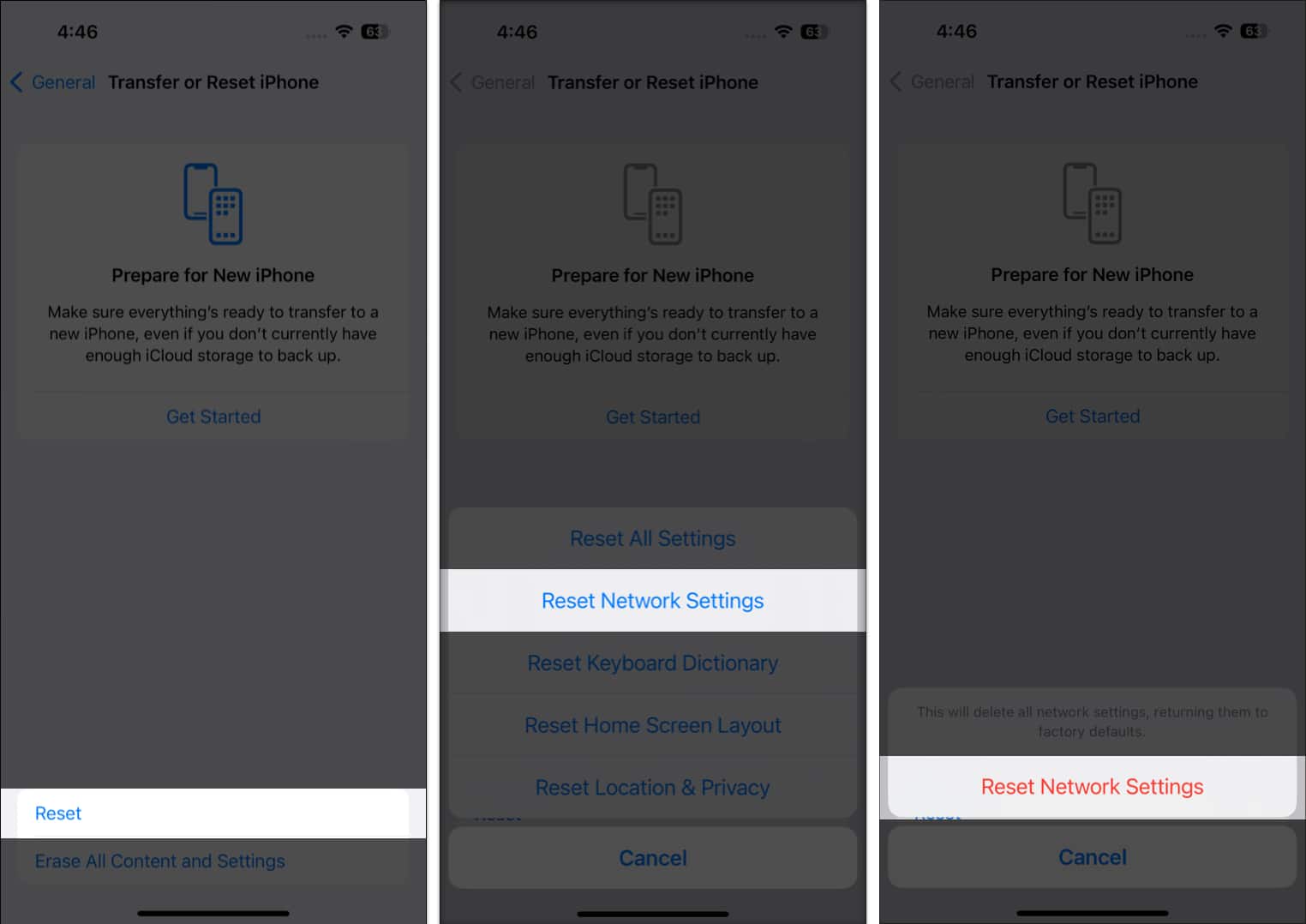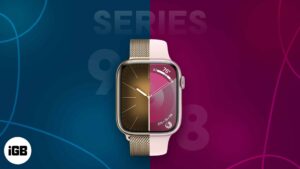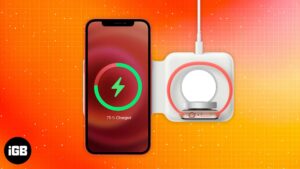With amazing new features for Safari, Messages, and the Phone app, iOS 17 makes for a worthy upgrade. However, if you can’t update apps on your iPhone in iOS 17, don’t worry – here are a few solutions that will help you fix the problem.
- Reboot your iPhone
- Pause and resume the app update
- Check available storage on iPhone
- Connect to Wi-Fi
- Set date and time automatically
- Delete the app and reinstall It
- Turn off and on automatic updates
- Make sure that restrictions are off
- Sign out and into your Apple ID
- Update iOS
- Reset Network Settings
1. Reboot your iPhone
When an app or device is acting up, an excellent old restart is the best solution. Similarly, restarting an iPhone, for that matter, fixes several minor and temporary issues.
However, the method varies for Face ID and Touch ID devices, so check out this complete guide to find the right way to reboot your device.
Note: An alternate way to shut down iPhone is to open the Settings app → General → Scroll down and tap Shut Down → Slide to power off your iPhone. After a minute, switch it back on.
2. Pause and resume the app update
If the update takes too much time or is stuck at the waiting screen, restarting the process might help.
- On the iPhone home screen, firmly press the app icon.
- Tap Pause Download.
- After a few seconds, tap the app icon again to resume it.
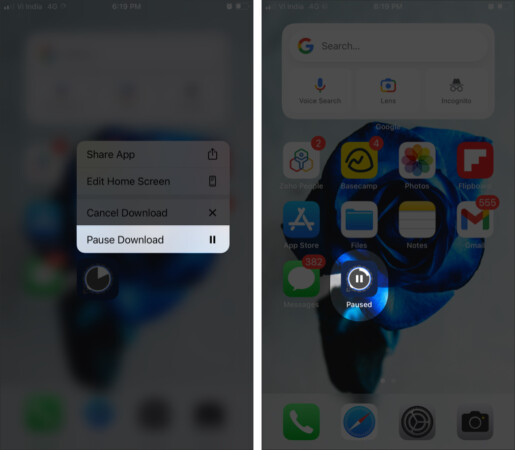
You can also choose to cancel the update and restart it from the App Store.
3. Check available storage on iPhone
Apps and iOS updates can not happen if enough free space isn’t available on your iPhone. Here is how to check storage in devices running iOS 17 or 16.
- Open the Settings app → Tap General.
- Tap iPhone Storage and check storage.
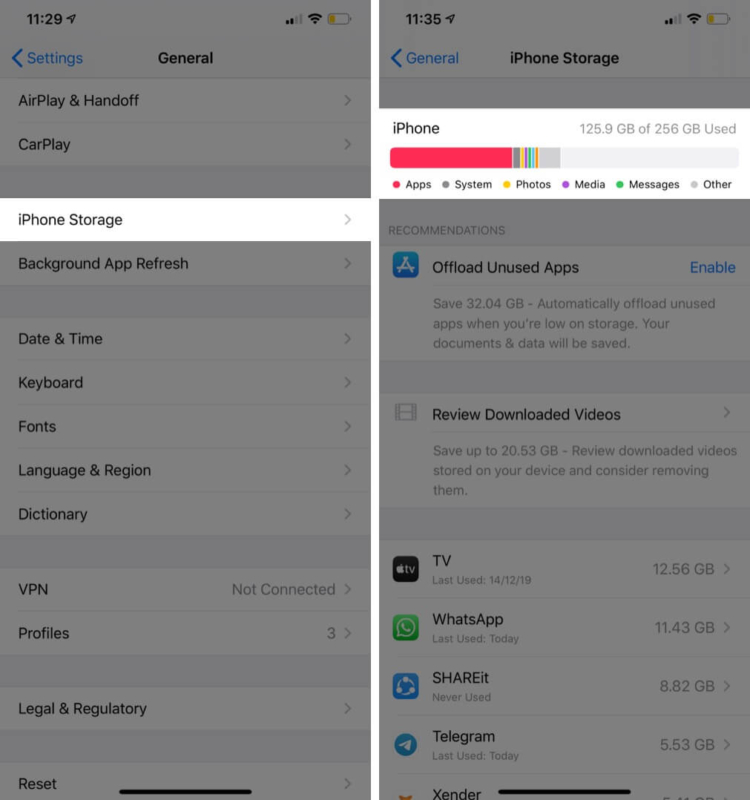
If there is no or little space, free up storage on the iPhone and try to update the app again.
4. Connect to Wi-Fi
App downloads and updates are possible over cellular data. However, if you cannot do so, connect to a Wi-Fi network and try to update the app again.
5. Set date and time automatically
Not only app updates but a lot of features like FaceTime need the correct time and date. The easiest way to always ensure that your device has the appropriate time is to set it to update automatically.
- Open the Settings app → Tap General.
- Tap Date & Time → Enable Set Automatically.
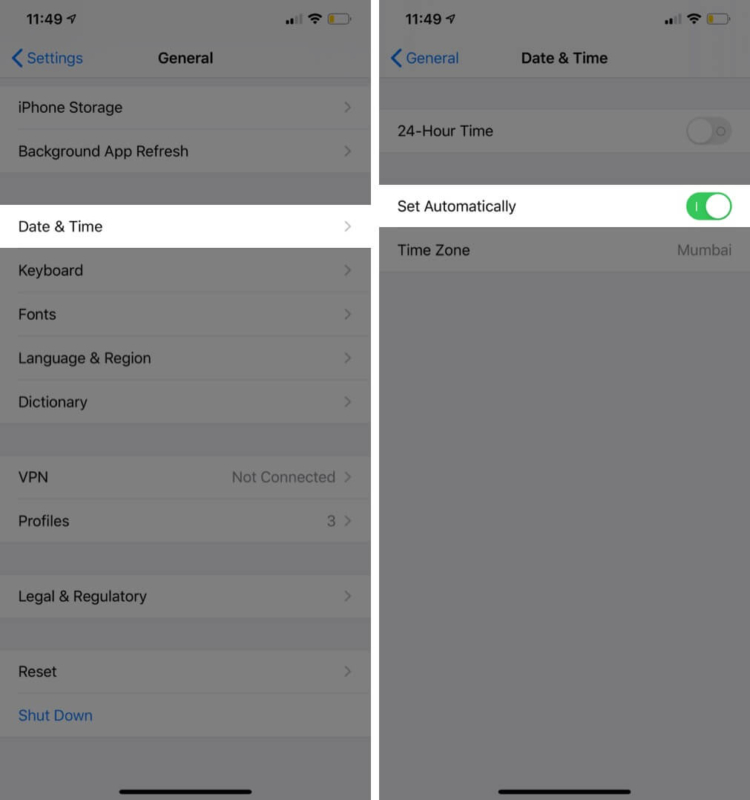
6. Delete the app and reinstall It
Proceed with caution; unless you have a cloud backup for the app, you’ll lose the data during the delete. For instance, if you don’t have an up-to-date backup for WhatsApp, all the recent chats and media will be lost.
One solution for this may be to offload the app and this keeps the app data but only removes the app.
7. Turn off and on automatic updates
- Open the Settings app → Tap App Store.
- Turn off App Updates and turn it back on after 30 seconds.
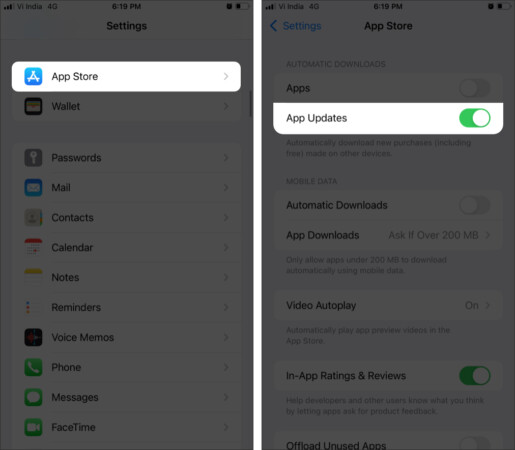
8. Make sure that Screen Time restrictions are off
Screen Time restrictions in iOS can prevent app installs and uninstalls. Let us check if this is the case.
- Open the Settings app → Tap Screen Time.
- Tap Content & Privacy Restrictions.
- Now, tap iTunes & App Store Purchases.
- Make sure Installing Apps is set to Allow.
9. Sign out and into your Apple ID
- Go to the App Store → Tap Profile icon.
- Scroll to the bottom and tap Sign Out.
- Go back to the top again and Sign in with your Apple ID after a few seconds.
Try to update the app now and move on to the next step if this does not work.
10. Update iOS
Always ensure that your iPhone or iPad is on the most recent version of iOS. To update your device:
- Open the Settings app → Tap General.
- Tap Software Update → Download and Install if you see a pending update.
11. Reset Network Settings
One final solution is to reset settings on your iPhone. This will not delete any personal data. But will erase Wi-Fi passwords, VPN configurations, Bluetooth devices, etc. Make sure you have a backup in case things go wrong.
- Open the Settings app → General.
- Tap Transfer or Reset iPhone → Tap Reset → Tap Reset Network Settings.
- Enter your iPhone Passcode and Reset Network Settings again
- After the process completes, connect to Wi-Fi or Cellular data and try updating the app
Contact Apple Support
Finally, if nothing works, try contacting Apple Support or visit them in-store.
That’s all, mate!
I hope one or a combination of more fixes helped you, and now your apps are updating normally as they should. If you have a related query, feel free to mention it in the comments down below.
Want more app-related assistance, these might be some worthy reads:
- How to change App Store country or region on iPhone and iPad
- How to cancel App Store subscription from iDevice
🗣️ Our site is supported by our readers like you. When you purchase through our links, we earn a small commission. Read Disclaimer.

